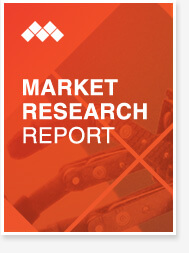Emerging Trends in the Global Natural Language Processing (NLP) Market
The natural language processing market is estimated to increase from USD 18.9 billion in 2023 to USD 68.1 billion in 2028, at a 29.3% CAGR over the forecast period. The natural language processing market is growing due to a variety of factors, including advances in text-analyzing computer programmes, a growing need for enterprise solutions to streamline business operations for a better customer experience, a surge in demand for cloud-based NLP solutions to reduce overall costs and improve scalability, and a demand for predictive analytics to reduce risks and identify growth opportunities.
Emerging trends in the global Natural Language Processing (NLP) Market:
- Advancements in Deep Learning and AI
- Increasing Use of Pre-trained Language Models
- Expansion of Multilingual NLP
- Rise of Conversational AI
- Enhanced Sentiment Analysis
- Integration with Edge Computing
- Focus on Ethical AI and Bias Reduction
- Personalization in NLP Applications
- Use in Healthcare
- Regulatory and Compliance Applications
- Integration with Augmented Reality (AR) and Virtual Reality (VR)
- Growth in Open-Source NLP Tools
- Improvement in Machine Translation
- Development of Domain-Specific NLP Solutions
- Enhanced Document Summarization and Information Retrieval
To know about the assumptions considered for the study download the pdf brochure
-
Advancements in Deep Learning and AI
- The integration of deep learning and AI technologies is significantly enhancing NLP capabilities, leading to more accurate and nuanced language understanding, translation, and generation.
-
Increasing Use of Pre-trained Language Models
- Models like GPT-4, BERT, and other pre-trained transformers are becoming the standard, providing robust frameworks for various NLP applications, reducing the need for extensive custom training.
-
Expansion of Multilingual NLP
- There is a growing emphasis on developing NLP systems that can handle multiple languages and dialects, making technology more accessible globally and supporting international business operations.
-
Rise of Conversational AI
- The deployment of conversational agents, chatbots, and virtual assistants is expanding across industries, driven by improvements in natural language understanding and contextual awareness.
-
Enhanced Sentiment Analysis
- Advanced sentiment analysis tools are being developed to better gauge consumer opinions and emotions, providing deeper insights for businesses in marketing, customer service, and product development.
-
Integration with Edge Computing
- Combining NLP with edge computing is emerging as a trend to process language data closer to the source, which reduces latency and enhances real-time processing capabilities for applications like voice assistants and smart devices.
-
Focus on Ethical AI and Bias Reduction
- There is a growing focus on ensuring NLP models are fair and unbiased, with significant research and development dedicated to identifying and mitigating biases in language models.
-
Personalization in NLP Applications
- NLP is being used to create more personalized user experiences, whether in customer service, content recommendations, or personalized marketing, by understanding individual user preferences and contexts.
-
Use in Healthcare
- NLP applications in healthcare are expanding, from improving electronic health records (EHR) management to assisting in diagnostics through analysis of medical literature and patient interactions.
-
Regulatory and Compliance Applications
- NLP is being increasingly utilized to help organizations comply with regulatory requirements by automating the extraction, classification, and analysis of legal and compliance documents.
-
Integration with Augmented Reality (AR) and Virtual Reality (VR)
- NLP is being integrated with AR and VR to create more immersive and interactive experiences, enhancing applications in gaming, education, and training.
-
Growth in Open-Source NLP Tools
- There is a surge in the availability and use of open-source NLP tools and frameworks, democratizing access to advanced NLP technologies and fostering innovation through community collaboration.
-
Improvement in Machine Translation
- Advances in machine translation are making it more accurate and contextually relevant, aiding in breaking down language barriers and facilitating global communication.
-
Development of Domain-Specific NLP Solutions
- Tailored NLP solutions are being developed for specific industries such as finance, law, and education, providing specialized functionalities that address unique industry requirements.
-
Enhanced Document Summarization and Information Retrieval
- Improved techniques in document summarization and information retrieval are enabling quicker and more efficient access to relevant information, benefiting sectors like research, journalism, and legal.
These trends indicate a rapidly evolving NLP market, driven by technological advancements, growing applications across various sectors, and a focus on ethical and inclusive AI development.Top of FormBottom of Form
Related Reports:
Natural Language Processing (NLP) Market by Offering (Solutions, Services), Type (Rule-based, Statistical, Hybrid), Application (Sentiment Analysis, Social Media Monitoring), Technology (IVR, OCR, Auto Coding), Vertical & Region - Global Forecast to 2028
This FREE sample includes market data points, ranging from trend analyses to market estimates & forecasts. See for yourself.
SEND ME A FREE SAMPLE





